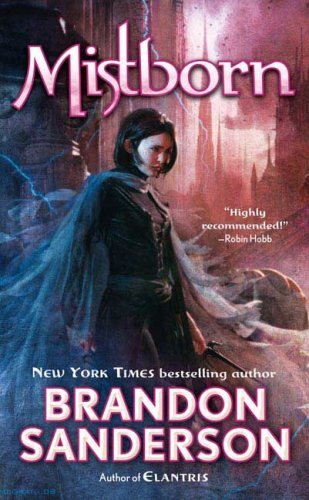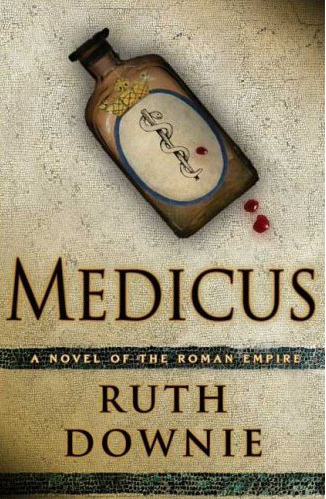Most Common Writing Mistakes, Pt. 53: No Contractions in Dialogue
 What’s the worst writing mistake an author can make? It’s a broad one: doing something you think makes you look sophisticated and clever, when really… it doesn’t. A common manifestation of this is a conscientious avoidance of contractions in dialogue and narrative.
What’s the worst writing mistake an author can make? It’s a broad one: doing something you think makes you look sophisticated and clever, when really… it doesn’t. A common manifestation of this is a conscientious avoidance of contractions in dialogue and narrative.
I’ll admit I fell prey to this as a young writer (who not so coincidentally read a lot of Austen and Dickens). Contractions were informal, hence they must be unprofessional. And I was far too smart to be anything less than polished in my first novel.
The result, however, was more along the lines of what blog reader Jim Prall mentioned in a recent comment:
“I just finished [an] audiobook…. All the dialogue was rendered with no use of contractions at all. It really stood out and seemed quite jarring, perhaps especially when read aloud. Real people naturally speak in contractions all day long. Dialogue composed without them seemed really stiff and artificial—almost as if English were not the speakers’ first language.”
Today, let’s examine why contractions in dialogue should absolutely find a place within your writing—along with a few exceptions, in which it is actually best to avoid them.
How to Avoid Contractions in Dialogue and Sound Like Pompous Buffoon
Contractions, of course, are shortened words or phrases, usually created by combining two words and noting the juncture (and usually some deleted letters) with an apostrophe.
For example:
Can’t for cannot
Won’t for will not
She’ll for she will
He’d for he would or he had
They’re all slang—glorious slang!—and because almost everyone commonly uses contractions in almost all forms of communication, writers can hardly avoid contractions in dialogue without also sacrificing realism. What’s arguably even worse is that, because about the only times we do naturally avoid contractions is in super-formal usage, contraction-less writing inevitably comes across as forced, prim, even supercilious.
Take a look:
Billy galloped in from the cornfield, kicking the old mule forward. “The bandits is coming, Ma! They are coming for sure this time!”
Josephine looked up from the washtub and shaded her eyes. “Well, it is about time, is it not? We cannot keep hiding all this gold forever and a day.”
“But that is not all.” Billy dragged the old mule to a dusty stop. He gulped for air. “Pa is with them. White horse, white hat. I am sure it is him, Ma, I am just sure.”
Her heart stopped. “Good Lord. That cannot be. It just… that marshal said he died for sure.” He could not have lied… could he?
Do these folks sound like dirt-poor Old West farmers with dubious backgrounds? For that matter, do they sound like anybody you’ve ever heard of outside of Victorian British society (more on that in a sec)? Was the reading easy? Was it fun?
Or did it sound pompous and stilted?
How to Use Contractions in Dialogue to Rock Your Dialogue and Narrative Voice
Even aside from the fact that their prevalence necessitates their use in any sort of realistic dialogue or narrative voice, contractions are a tremendous tool for writers. A clever use and choice of contractions in dialogue will allow you to flavor your characters’ voices in unique and specific ways. Consider two lines from my historical superhero work-in-progress Wayfarer, set in early 19th-century England:
Example #1: “It is such a beautiful day, is it not? I love these genial September days in the country.”
Example #2: “Want my advice? Don’t be taking lodgings here. Post yourself straight from London. This ain’t no place for the innocent, if you know what I mean.”
Bet you can tell straight off which is the daughter of an earl and which is the street waif.
Now, take another look at our original example, but with a few choice contractions sprinkled into the dialogue:
Billy galloped in from the cornfield, kicking the old mule forward. “The bandits is coming, Ma! They’re coming for sure this time!”
Josephine looked up from the washtub and shaded her eyes. “Well, it’s about time, ain’t it? We can’t keep hiding all this gold forever and a day.”
“But that ain’t all.” Billy dragged the old mule to a dusty stop. He gulped for air. “Pa’s with ’em. White horse, white hat. I’m sure it’s him, Ma, I’m just sure.”
Her heart stopped. “Good Lord. That can’t be. It just… that marshal said he died for sure.” He couldn’t have lied… could he?
They sound like totally different people, don’t they?
But What About Contractions in Narrative?
Every now and then, I’ll run into a writer who received a critique (usually from a fellow unpublished author), in which they were advised to use contractions, but only in dialogue. Is that accurate?
Yes and no. Ultimately, it depends upon how formal you want your narrative to be. But if you’re writing deep within your character’s head—in first-person or deep third—then the narrative voice you’re creating will follow the same basic principles as dialogue. The first and foremost of those principles is: Make it sound alive!
 Here’s a third-person example from Brandon Sanderson’s Mistborn:
Here’s a third-person example from Brandon Sanderson’s Mistborn:
It wasn’t a hard rain, but it seemed to clear the mist slightly. Vin shivered, pulling up her hood, crouching beside Kelsier on a rooftop. He didn’t pay the weather much heed, so neither did she. A little dampness wouldn’t hurt—in fact, it would probably help, as the rainfall would cover the sounds of their approach.
 And a first-person example from John Green’s The Fault in Our Stars:
And a first-person example from John Green’s The Fault in Our Stars:
That is probably true even if you live to be ninety—although I’m jealous of the people who get to find out for sure. Then again, I’d already lived twice as long as Van Houten’s daughter. What he wouldn’t have given to have a kid die at sixteen.
In short, please, use contractions.
4 Exceptions: When You Shouldn’t Use Contractions in Dialogue
With all that said, there absolutely are instances in which foregoing contractions in dialogue is a good choice. Here are four:
1. When Writing Historical Dialogue
One of the reasons we still instinctively feel contractions are less than sophisticated is because, for centuries, they were. Particularly prior to the 20th century, contractions were used only by the lower classes. (Hence, my earl’s daughter in the previous excerpt and her hoity “is it not?”.)
This does not mean you can never use contractions in historical dialogue, but it does mean you must be aware of the conventions of the times and which characters would and would not be using contractions in their everyday speech.
 Again, however, another exception: when writing very ancient historical fiction, you can often get away with putting surprisingly modern words in your characters’ mouths, since you’re not going to be able to accurately replicate their true forms of speech with any intelligibility to today’s readers. Ruth Downie’s Medicus, set during the Roman Empire, is a good example:
Again, however, another exception: when writing very ancient historical fiction, you can often get away with putting surprisingly modern words in your characters’ mouths, since you’re not going to be able to accurately replicate their true forms of speech with any intelligibility to today’s readers. Ruth Downie’s Medicus, set during the Roman Empire, is a good example:
“Merula isn’t going to hurt you, Tilla. She’s no fool. She wouldn’t dare touch someone else’s slave.”
2. When It Suits the Character’s Personality
Contractions are a valuable tool in conveying dialect and informality (such as Billy and his mom or my Cockney street waif from the above examples), but it works in reverse too. When you’re purposefully writing a character who is elegant, educated, pompous, or reserved, foregoing at least some of his possible contractions may be a good choice.
3. When the Character Is Not a Native Speaker
 As Jim Prull noted in the comment I shared at the top of the article, a lack of contractions in dialogue often makes characters (or the author) sound like a non-native speaker. When this is the intended effect, it can be used to great advantage. I chose this trick for the mysterious woman who falls out of the sky in my aviation-adventure novel Storming:
As Jim Prull noted in the comment I shared at the top of the article, a lack of contractions in dialogue often makes characters (or the author) sound like a non-native speaker. When this is the intended effect, it can be used to great advantage. I chose this trick for the mysterious woman who falls out of the sky in my aviation-adventure novel Storming:
“To Groundsworld I am falling. Now I am having to go home before time is too late. Please. But you cannot be talking of this to any persons on ground.”
4. When the Situation Is Formal
When you’re in a situation where you want to make a good impression, appear professional, or cover your nerves, you’re more likely to speak precisely and avoid contractions. Same goes for your characters. When one of them is nervous or giving a speech (or both), you might want to consider stiffening his language choices just a bit.
In your quest to bring your characters and stories to life, you need to access every possible tool. Contractions in dialogue are a comparatively small trick, but they can also be a powerful one when used with knowledgeable intent. I can’t sum it up better than Jim Prull did in his comment:
So whatever you feel you must do in your own voice as narrator, please don’t artificially distort your characters’ dialogue to satisfy some imagined requirement for “proper” grammar.
Wordplayers, tell me your opinion! How do you feel about contractions in dialogue and narrative? Tell me in the comments!
http://www.podtrac.com/pts/redirect.mp3/kmweiland.com/podcast/mistakes-53.mp3
Click the “Play” button to Listen to Audio Version (or subscribe to the Helping Writers Become Authors podcast in iTunes).
The post Most Common Writing Mistakes, Pt. 53: No Contractions in Dialogue appeared first on Helping Writers Become Authors.



